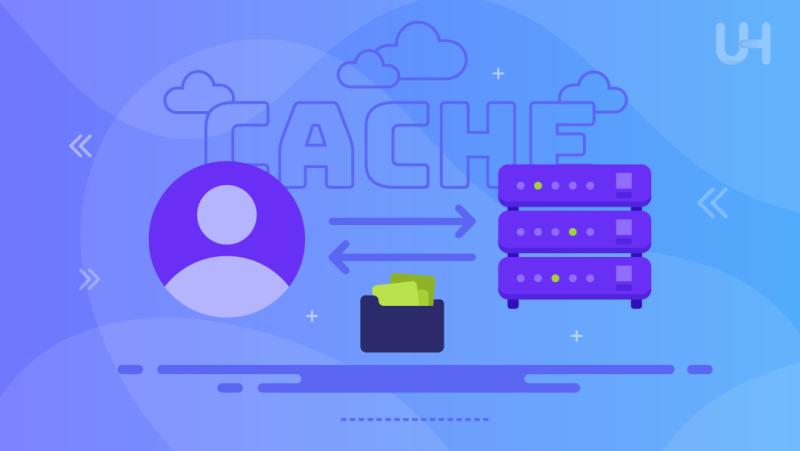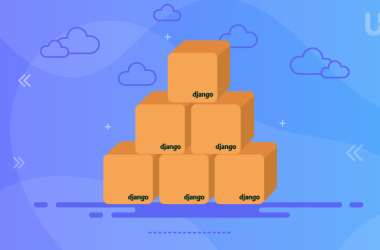Website cache is a vital storage. It saves your data as temporary files on the server. This temporary data helps keep your website running smoothly and prevents you from inputting your credentials frequently. There are various types of website caches, each serving a purpose to store your data. Here, we’ll be looking in depth at what a website cache is and how it affects the performance of your websites.
What is Website Cache?
When you visit a website, as a user, you accept the transfer of your data to their server. Once the server has collected and made backup copies of your data, they will only proceed to view your content.
This makes the website cache a type of online data that each system stores as a temporary file. This helps make your future access to the website easy. The websites with cache suffer the reality of resending requests to the clients landing on their site each time they visit.
Types of Website Cache
There are numerous ways a website can store your data after you view its interface. Here are some of the types of Website Cache that help reduce your website latency:
Website Cache
Website cache is a major type of cache. You can mainly use a web cache to store a backup of your data upon loading the website page. The website will easily recreate the data in the cache to improve website speed. This prevents you from experiencing lagging website access. In this type of web cache, you are responsible for maintaining the storage instead of the website owner.
Although the owner is responsible for determining the timeline of the cache to last on the website, in the context of website hosting, If your website doesn’t change over time, then configure the cache at certain intervals. On the other hand, if the changes are made regularly, then assigning an expiry is recommended for a better refresh rate over time. If the webpage isn’t performing these tasks, then the site will display out-of-date content rather than the updated website page.
Browser Web Cache
A browser web cache is a unique type of cache that is responsible for storing numerous multimedia elements, which include images, CSS, and even the HTML used. Both the Browser web cache and the site caching work together on the client side, which allows the browser itself to view the page and has total control over the visitor’s cache. Browsers will decide a time to delete their temporary cache or backups of your data to empty any undesirable space in the server.
Server Web Cache
Server web cache is a dedicated cache that is significantly used with Content Delivery Network caching, opcode caching, and objecting caching. When combined, they help store various types of data on the website’s server, including the data present on a WordPress hosting server. It plays a huge role in keeping the data overseen by the owner.
It is perhaps the easiest way to lessen the burden on your server. Using this cache, the server looks into the temporary storage after receiving a request from the client and proceeds to find the relevant information. If the requested content is already present in the cache, then the browser will retrieve the data without any issues, making your server faster.
Supercharge Your Website Performance With The Best VPS Hosting!
Ready to elevate your website’s speed and security? Get your hands on UltaHost’s Cloudflare hosting service, which utilizes the Cloudflare Content Delivery Network (CDN) to enhance the security and speed of your website.
Micro Web Cache
Micro web cache is one of the least familiar web caches known. Hardly any owners are aware of its functions. This type of cache lasts for a brief period, which ranges from 5 to 10 seconds at most. It is mainly used for a non-dynamic version of your dynamic content.
Micro web cache is more focused on the end-users than the website owner when it comes to caching content. Owners don’t use it as commonly as other web caches. The reason is simple: It saves your data for a longer time. Therefore, it doesn’t benefit many websites in terms of data storage. Trading websites commonly use this type of cache as they require frequent changes in their data.
How Does Web Cache Work?
The Web Cache works as a temporary storage for the visitor’s data. As people come to your site, the website will store their data on its server. This data includes but is not limited to your name, email, and password. This way, you, as a visitor, don’t have to provide the website your credentials each time you visit it, as your data is already stored as temporary files in the website’s server. This improves the overall speed of the website when loading its pages, thus enhancing the user experience.
Should You Clear the Cache on the Website?
If you are ever in need of clearing your website, chances are you are facing loading issues with your website. Therefore, to remove unwanted temporary internet files, you can regularly remove the cache from your browser to improve the efficiency of each website you load per day, including a social network website.
However, before you clear your cache, you must keep in consideration that clearing your website cache means that you’ll be clearing your entire online credentials stored in the site’s backup. You can save your passwords and other information by paying attention to which checkbox to select when clearing the cache.
How To Clear Website Cache With Your Default Browser?
You can manually remove your website cache despite it clearing itself after a while on your browser. Simply head over to your default browser. In this case, we’ll be using Google Chrome. Click on the three dots in the top right corner where you enter the Google Chrome extensions section. Navigate to the tools options. Select “Clear Browser Data” and choose the time range at the top. Check the boxes next to “Cookies and other site data” and “Cached images and files,” and click on Clear data to remove all of your website cache.
Why is Website Cache Important?
Website cache is one of the most important aspects of your online presence, especially for high-traffic WordPress hosting. It lowers the chances of traffic in the network. It does this by storing copies of your data, which helps improve the website’s performance and minimize latency from it. The best part about saving server data is that it reduces the usage of bandwidth each time you access the website. This helps lower the hosting cost for high-traffic websites.
Conclusion
Website cache plays a massive role in improving the performance of your website, especially when taking into context high-traffic WordPress hosting. Each time you visit the site, it stores your data. Plus, it reduces the website latency, thus increasing the user experience in the process. Knowing what each type of website cache does is necessary to make certain decisions regarding the use of your data online. This requires you to follow the best caching strategies available in the most cost-effective manner.
With the knowledge of website cache and the cheapest WordPress hosting service from UltaHost, you can easily get your site up and running! This powerful hosting solution makes it simple and inexpensive to build your website.
FAQ
What is website caching, and how does it help speed up my site?
Website caching involves storing frequently accessed elements like images and scripts. It boosts site speed by letting browsers reuse these stored items instead of downloading the new ones, enhancing the overall user experience.
Is browser caching important? What does it cache?
Browser caching helps in quicker page loads. It stores static resources (images, stylesheets) on a user’s device. This way, when they revisit your site, the browser retrieves these files locally instead of fetching them again from the server, leading to faster load times.
Are there different types of caching, and how do they contribute to performance?
Yes, there are various caching types. Browser caching optimizes client-side speed, server-side caching reduces processing load, and Content Delivery Network (CDN) caching improves global performance. Combining these methods ensures a faster, more efficient website.
How can I implement and manage caching for my website?
Implement caching by configuring server settings, using plugins, or leveraging CDNs. Manage cache duration carefully to balance performance and content freshness. Regularly monitor and update your caching strategy for sustained optimal website speed.










